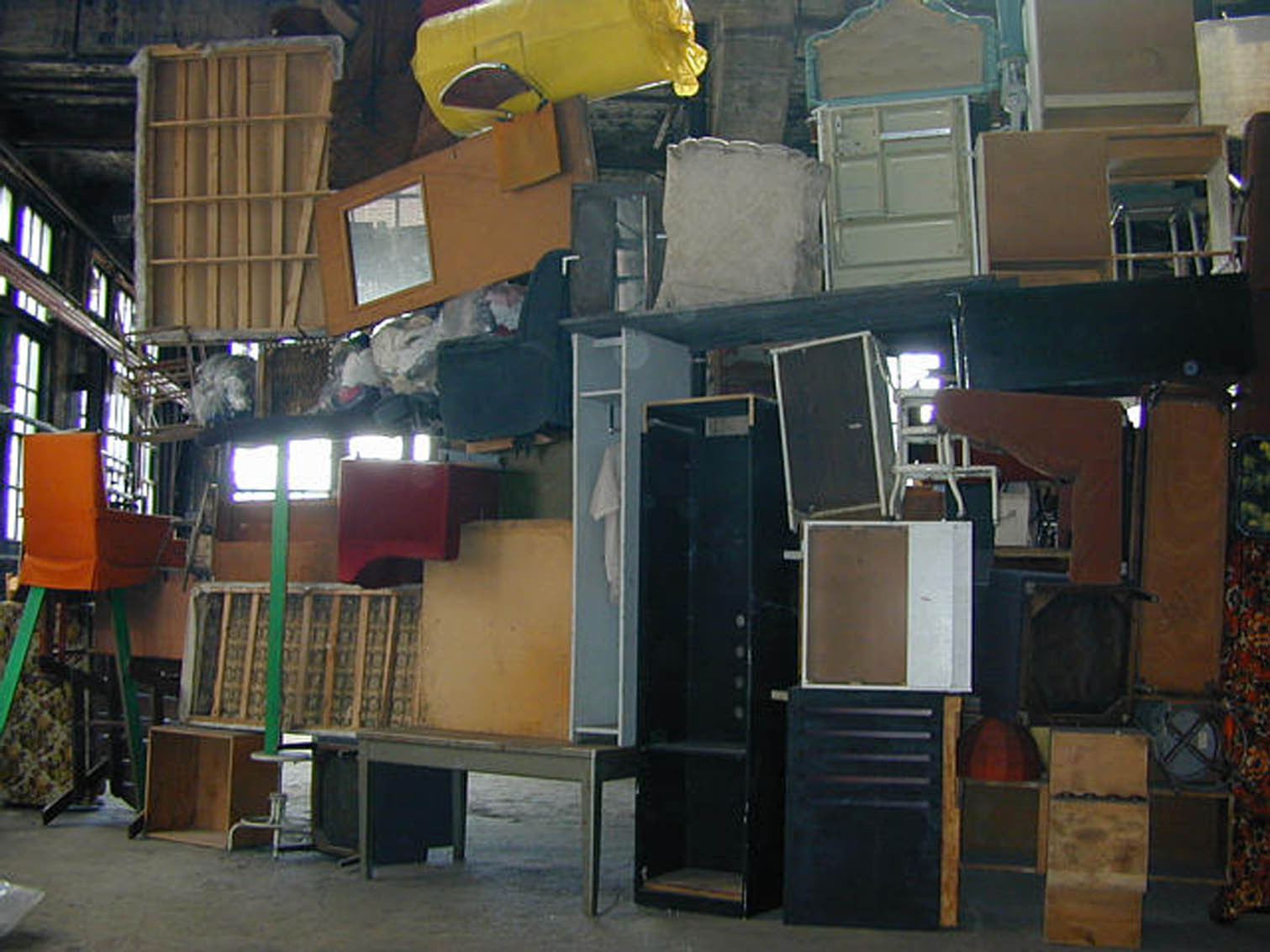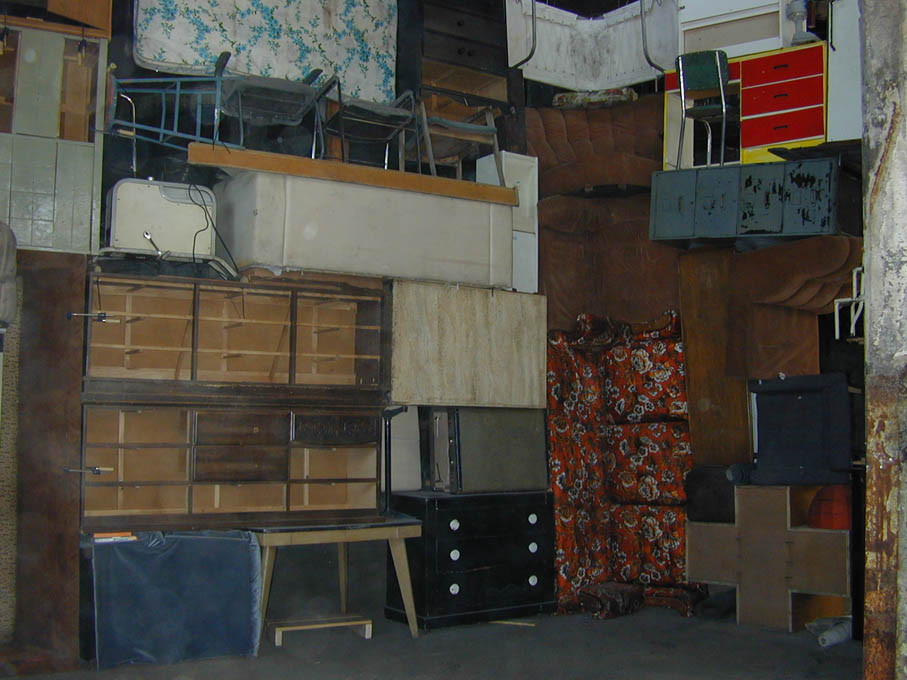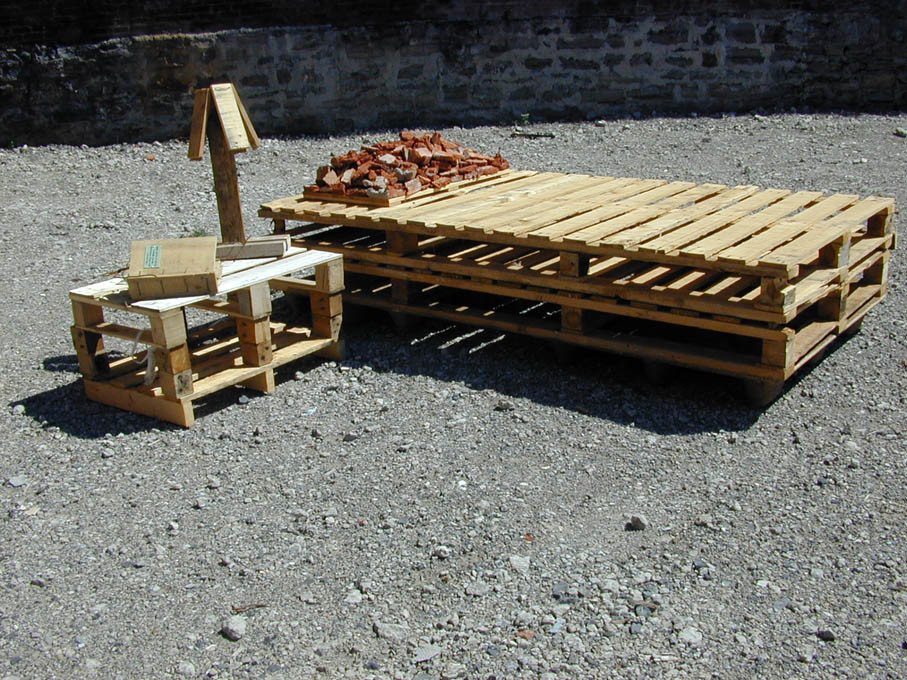


Working in collaboration, the artists are constructing an enclosed room in the Darling Foundry composed of objects found the streets of Montreal, most derived from the garbage. Their daily act of gathering began within the context of July - moving month in Quebec, when the streets are full of discarded objects. The room simultaneously inhabits two identities: that of the street - public space, and that of the interior, the private sphere. The exhibited object thus performs a transition: derived from the private, it is recycled and provided with a second life in the public realm. At the end of the exhibition they will return to the street, a site of transition. The Darling Foundry itself demonstrates these characteristics of the street. The inside and outside seem to merge, becoming subject to confusion.
The use of the found object is not without precedent in the history of art: the French New Realists, among others, made it their primary material and their practice recalls the Italian Arte Povera movement of the late 1960s, where used objects served as primary, raw material. In the work of Poorter and Akrey, assorted objects derived from the everyday are not displayed for entirely aesthetic purposes, rather, they become construction material, serving to build the walls of a dwelling. These countless sturdy objects (sofas, chairs, desks, washing machines, mirrors, suitcases...) encroach the space, unfurling through processes of accumulation and assemblage - stacked and overlapping fragments joined by material appropriate to the language of construction.
The title Palaindrome is a neologism, possessing two levels of reading. It refers directly to the homonym palindrome, a word or group of words that retain the same meaning whether read from left to right or from right to left. The two spaces re-enact this dual function: the larger environment of the foundry, inhabited by industial relics and delapidated objects responds to the constructed room, which is itself created from these elements. The two spaces echo each other, generating a dialogue on the notion of recycling. The exhibition coincides with Quartier Ephemere's installation within this obselete industrial building. Furthermore, the use of the letter a as a separation between pal and indrome emphasizes the individual words: the first signifies a tool with a pointed tip, reffering to the notion of fashioning, or establishing something somewhere. The second is Latin, meaning 'in preparation for a race', referring to the room as a developing process where the public can witness the stages of its conception. With its gigantic dimensions, Palaindrome questions ideas of sculpture and space. Having no autonomous existence, its is not architectural, and remains both inseparable and in opposition to the Darling space. During the exhibition, the artists will intervene in the space of the city, creating fake furniture from abandonned wood palettes. These constructions will be left in place, stamped with a notice which briefly outlines the artistic context. They seek to create a convivial space recalling the domestic world. and anticipate the participation of passers-by with their bedroom, their living room and their dining room. While a chair belongs to the realm of the closed room, a dismantled palette is transformed into a chair. With these small urban refuges and the constructed room, the artists demonstrate the permutation and theversatility of the object. In the work of Akrey and Poorter, their poetics reside in the many expressive possibilities of spanning them between the private and the public.
Esther Bourdages
Quartier éphémère remercie la Société de développement de Montréal, le Conseil des Arts et des Lettres du Québec, le Conseil des Arts de la communauté urbaine de Montréal, Lafarge Canada, Bico Steeplejack, et RCR international.
Donna Ackrey & Yvette Poorter
Donna Ackrey and Yvette Poorter's respective work focusses on installation and in-situ art. Through the principle of recycling of the object they create utopian constructions.
